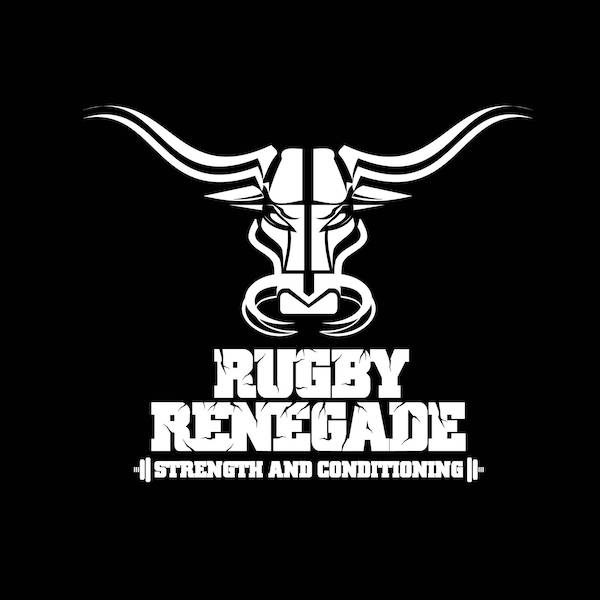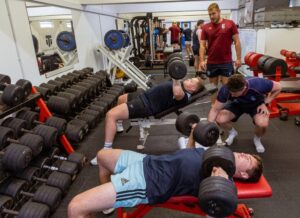This week Team Renegade visited a speed masterclass put on by West Bromich Albion FC. It featured Jean-Benoit Morin an expert in force velocity profiling and Jonas Dodoo an olympic level speed coach. This article will highlight the key points from JB Morin’s presentation on sprint force-velocity profiling…
Acceleration is the Key!
JB has researched some of the top sprinters in world athletics and says that acceleration is hugely important for increasing top speed. In team sports this is even more apparent as they will rarely reach top speed and competition over the shorter distances can decide the winner. Make sure your training includes working on your first few steps and decreasing your 10m time.
Good Athletes produce Force at High Speed
It shouldn’t take much explaining that producing more force faster is a good thing. Checkout our article on the force velocity curve if you want to learn more: Understanding the Force Velocity Curve for Rugby.
Better Athletes Maintain Rate of Force for Longer
JB’s research has shown that for every step taken in a sprint the force produced decreases. This makes sense because as you progress through a sprint you move from high force low speed to low force high speed. What he has found though is that the better sprinters maintain the force produced for longer and therefore can accelerate for longer. The novice athlete, on the other hand will drop off quickly.
Same Speed = Same Force Velocity?
The quick answer, No! it’t for this reason that JB’s research is so promising. You see you can have two players with very similar speed scores but one is more force dominant and the other more velocity dominant. JB can show that if you train the athletes individual weakness you will get improved performance.
How do we train it?
 This is the question that JB’s latest research is trying to answer but more training studies are needed. We need to find out what training is effective for improving force and velocity. One study that is yet to be published looked at very heavy sled training to improve the force capabilities. They performed 20m sled tows with 80% of bodyweight twice a week for 8 weeks. They found it produced increased horizontal force, maximum power and max ratio of force.
This is the question that JB’s latest research is trying to answer but more training studies are needed. We need to find out what training is effective for improving force and velocity. One study that is yet to be published looked at very heavy sled training to improve the force capabilities. They performed 20m sled tows with 80% of bodyweight twice a week for 8 weeks. They found it produced increased horizontal force, maximum power and max ratio of force.
For more ideas on training horizontal force velocity checkout these great articles: GPP, Sled Drags Rugby, 5 Ways to get Faster for Rugby & The Best Exercise for Rugby You’re Not Doing
Union is Better Than League?!
Well not really! But a study that compares the two rugby codes find some differences in horizontal force velocity capabilities. Both codes have similar velocity ability but union players have better force capability. This is probably due to the more horizontal nature of some of the activities in union but certainly highlights the need for slightly different approaches for each code. To read more about this paper click here: Mechanical Properties of Sprinting in Elite Rugby Union and Rugby League
Force Velocity for Injury Prevention
JB’s research isn’t just about improving performance. One of his studies looked at athletes force velocity profile on their return to play to sport. He found that their velocity ability had returned to normal on return to play but their force capability and maximum power hadn’t. It took 2 months for force and max power to return to pre injury levels. This begs the question, are we risking re-injury if the athletes force capabilities haven’t returned to normal before return to play? Expect to see more research about this in the future.
Hamstrings for Speed
JB has found that hamstring eccentric force and activation is extremely important for sprinting performance. Make sure that you are training your posterior chain and especially exercises that accentuate the eccentric portion of the lift; Romanian Deadlifts and Nordics are great examples.
My Sprint App
Now you might be thinking all that is great but without having access to a lab with force platforms in a sprint track how do I know if I’m force dominant or velocity dominant?! Well we might have the answer and all you need is an iPhone a tape measure and some poles! JB has been involved on the development of an app where you simply film a 30m sprint and it gives you all the data you need. It even shows your your very own force-velocity graph. Check it out here: MYSprintApp
Closing Thoughts
We hope that gives you some insights into the latest research in sprinting and also some ideas of how to train to get faster and more powerful for rugby. Even if you can’t calculate your own force velocity curve it should highlight the need to train for both force and velocity in your training. Stay tuned for the write up of Jonas Dodoos presentation, coming soon…
Read our review of Jonas Dodoo’s presentation here: Speed for Team Sports




